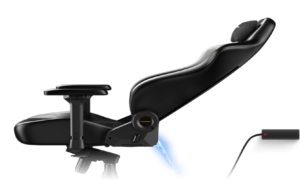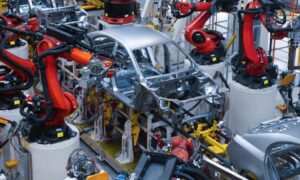Technological innovation is revolutionizing every industry as we know it. It is also giving rise to new industries while continuously bringing out new opportunities for existing ones. On a similar note, the meat processing industry has been long due for such developments. Luckily, many advancements are happening there as well. There are things like deboning, box handling, and other steps of the supply chain being entirely automated.
In this blog, we will take a look at various ways in which the meat processing supply chain gets enhanced by the touch of technological developments.
Primary Meat Processing
The primary meat processing consists of steps that prepare the meat for further processing. After the raw meat gets transported to the facility, this is the first step in the long supply chain. The following steps are involved in the primary processing of meat:
- Cleaning: The meat that arrives at the facility after going through the slaughter lines gets cleaned before any other processing takes place. Excess blood and other forms of impurities are removed from the meat during this process. There are automated systems that carry out the process of cleaning and preparing the meat.
- Scraping: The meat that has been cleaned is moved for further processing. The next step is scraping, where the meat gets processed to remove fat and other impurities. The process of scraping is done using automated mechanical scraping systems which help in this process.
- Deboning: After the scraping, the meat goes through deboning. This is another step where the meat is mechanically processed to remove the bones. The deboning process is also automated to a certain extent, where the bones are removed from the meat using automated mechanisms. The remains of the bones can be recycled or used for other purposes.
- Cutting: The meat that has been processed to remove the bones and other impurities is now ready for further processing. The meat is cut into desired sizes and shapes to facilitate the packaging, transporting, and selling of the product.
After the primary meat processing, it goes through secondary processing that involves things such as partially cooking or frying the meat. However, the secondary process differs based on what products a business sells. For almost all these processes, there are automated machines that reduce human handling of meat and increase sanitary conditions.
Material Handling
The next process is where you pack and store the processed meat. For this, you need batching systems, a frozen box handling system, and other such tools. The robot depalletizer is gaining popularity in the meat industry due to the rise in health concerns during packing. They are compact and help in cutting down costs, time, and labour required for arranging the frozen blocks of meat.
A robot depalletizer is reliable, flexible, and most importantly saves space for you. Efficient packaging methods reduce waste and also prevent excessive use of packaging materials like plastic wraps and cardboard boxes.
Conclusion
The meat processing industry has seen a lot of advancements over the years. There are several companies that are working on developing products that will change the way meat is processed in the future. With the right technology and innovation, meat processing may be the next step in the evolution of a sustainable food supply chain.



































